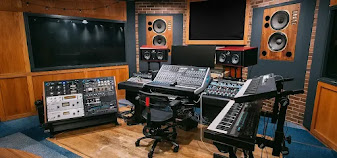Recording Guitars In The Studio: Tips To Stand Out
Being able to capture the soul of a guitar is more than just sounding good - it’s an art. Anyone who plays music and loves guitars will love getting that perfect guitar recording. The basics and some tips for recording your guitar at audio production Missouri are covered in this article. Let’s make your guitar stand out in the recording.
Picking the guitar and the gear
The first thing to do is to pick the right guitar for the task. Electric guitars are flexible and strong, while acoustic guitars are warm and personal. Consider the sound you desire and choose a guitar that fits that need. You’ll need some good gear at Maplewood studio. Good microphones, preamps, and audio interfaces are your best buddies. These tools capture all the tiny details of your playing and make sure your guitar recordings sound top-notch.
Microphone Magic for Your Guitar
Now, let’s talk about microphones. Where you place them makes all the difference. For acoustic guitars, experiment with mic positions to capture all those unique tones and textures. Electric guitar lovers can blend a few mics for that extra something. Remember, picking the right mic and finding its sweet spot can change everything.
Tips for Recording Different Guitar Styles
Different guitar styles need different approaches. Fingerstyle players should focus on the little details like fingerpicking and harmonics. Blues and rock guitarists might want to explore amps and effects pedals for their signature sound. Classical players should aim for clean and crisp recordings. So, adjust your recording techniques to fit the style you’re playing.
Dealing with Common Guitar Recording Hiccups
Recording a guitar can sometimes be a bumpy ride. String noise, feedback, and room noise can get in the way. To tackle these issues, you should try noise reduction tricks. Place your microphone strategically and use things like curtains or foam to dampen the sound in your recording space. Solving these problems can save you time and headaches.
After the Recording Session
Once you’ve got your guitar tracks, there’s more work to do. Editing, mixing, and adding effects are like the icing on the cake. These steps help you fine-tune your guitar recordings. Play around with EQ, compression, and reverb to shape your sound.
About Kalinga Production Studios:
Kalinga Production Studios provides high-quality production and recording services at Missouri recording studios. The studio has experience working with the best albums and recordings. The service is also available as a studio for rent.
Get in touch now by visiting https://www.kalingaproductions.com/




Comments
Post a Comment